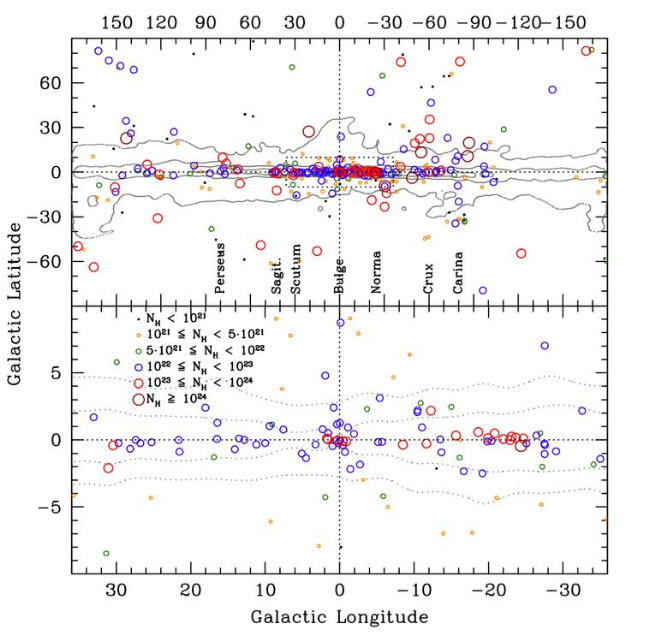
 Credit: A. Bodaghee et al.; ESA
Credit: A. Bodaghee et al.; ESA
ISGRI Unveiled
Even though space is a near vacuum, emptier than the most perfect vacuum ever created by humans, put enough of it together and it's hard to see through. Astronomers quantify this by a number called the "column density" - the amount of material in the cylindrical column of space between the astronomer and the astronomical object (star, white dwarf, black hole, whatever). If the column density is too high, the object is entirely hidden since its optical radiation is completely absorbed by the intervening material. But the absorbing power of material depends on the frequency of radiation being emitted, and decreases at higher energies. High energy radiation (like X-rays and gamma rays) can make it through very high columns of interstellar gas and dust. So such high energy emission is useful in finding objects hidden by high column densities, and also in measuring the column densities to those objects. The map above shows sources in our Galaxy detected by the ISGRI instrument on the INTEGRAL gamma ray observatory in the hard X-ray/gamma ray band. The circles show the locations of the sources in the Galaxy, while the size of the circles represents the column density to the source. This shows where the Galaxy is more opaque and less opaque - sort of like an X-ray (or gamma ray) of the Galactic Body.
<
HEA Dictionary ● Archive
● Search HEAPOW
● Other Languages
● HEAPOW on Facebook
● Download all Images
● Education ● HEAD
>
Each week the HEASARC
brings you new, exciting and beautiful images from X-ray and Gamma ray
astronomy. Check back each week and be sure to check out the HEAPOW archive!
Page Author: Dr. Michael F. Corcoran
Last modified Tuesday, 27-Feb-2024 10:06:35 EST


